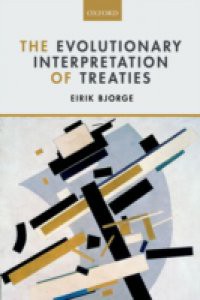If an old treaty regulating commerce or forbidding degrading treatment of persons is to be interpreted decades after its conclusion, does commerce or degrading treatment of persons have the same meaning at the time of interpretation as they had when the treaty was concluded? The evolutionary interpretation of treaties has proven one of the most controversial topics in the practice of international law. Indeed, it has been seen as going against the very grainof the law of treaties, and has been argued to be contrary to the intention of the parties, breaching the principle of consent. This book asks what the place of evolutionary interpretation is within the understanding of treaties, at a time when many important international legal instruments are overfive decades old. It sets out to place the evolutionary interpretation of treaties on a firm footing within the Vienna rules of interpretation, as codified in Articles 3133 of the Vienna Convention on the Law of Treaties.The book demonstrates that the evolutionary interpretation of treatiesin common with all other types of interpretationis in fact based upon an objective understanding of the intention of the parties. In order to marry intention and evolution, the book argues that, on the one hand, evolutionary interpretation is the product of the correct application of Articles 3133 and, on the other, that Articles 3133 are geared towards the objective establishment of the intention of the parties. Theevolutionary interpretation of treaties is therefore shown to represent an intended evolution.

